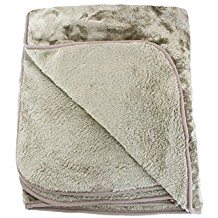Duvet purchasing advice: how to choose the right product
- The most important facts in a nutshell
- In our climate zone, we usually need a summer and a winter blanket.
- A blanket must keep warm and wick moisture away from the environment.
- Common filling materials are synthetic and natural fibres as well as down.
- Allergy sufferers should choose blankets made of synthetic fibres, as these can be washed at high temperatures.
A basic requirement for good sleep
Only those who sleep in a relaxed manner can cope with the demands of everyday life. In addition to slatted frame and mattress, the choice of duvet also has a decisive influence on our sleep quality. After all, the duvet is responsible for the microclimate that prevails around the sleeper. For a comfortable sleep, it must be as balanced as possible.
In temperate latitudes, most people usually have two blankets: one for winter and one for summer. Especially in the cold season, a cosy blanket is indispensable. Above all, it should keep us warm without making us sweat. In summer, we recommend a duvet that ensures a good temperature balance.

To ensure that we neither sweat nor freeze in bed, there are duvets that are specialised for summer, winter or the transitional seasons. In addition, the material plays an important role. A duvet consists of a filling and a cover. Common filling materials are, for example, down, cotton and polyester. The individual properties of these materials play a role in the selection, but personal preferences are just as important. After all, for many people the bed is a place of retreat where we want to feel as comfortable as possible.
Duvets by season
First of all, duvets can be divided into seasons. Due to the high temperature differences, a distinction is made between summer and winter quilts. The former should keep you warm, the latter should be as breathable as possible. There are also so-called all-season duvets.
Warmth classes of duvets
The so-called warmth class gives you an indication of which season a duvet is best suited for. Of the five warmth classes, class 1 has the lowest heat output, while class 5 has the highest. You will usually find a label on your duvet that indicates the warmth level.
| Warmth class | Property |
| 1 | Particularly light summer duvet |
| 2 | Light summer duvet, suitable as a transitional duvet |
| 3 | Medium-warm transitional blanket or all-season blanket |
| 4 | Warm winter duvet |
| 5 | Particularly warm winter duvet for sleeping with the window open. |
Winter blankets

Many people want to snuggle up in a bed that is as warm as possible in winter. A winter duvet must therefore have good insulating properties. However, an overly thick winter duvet can also cause the sleeper to sweat heavily. The blanket must therefore have breathable and moisture-regulating properties. Many are therefore filled with down, which fully meets these requirements. Synthetic fibre fillings are now just as common. A winter duvet corresponds to thermal classes 4 or 5.
Summer blankets

In summer, temperatures are often constantly high, even at night. Even when it is hot at night, some people do not want to do without a duvet out of habit. In order to experience a pleasant summer night, a summer duvet must be as breathable as possible so that no heat build-up occurs. Many summer duvets have a filling made of cotton or synthetic fibres, but silk is also common. The heat class of a summer duvet is 1 or 2.
All-season duvet
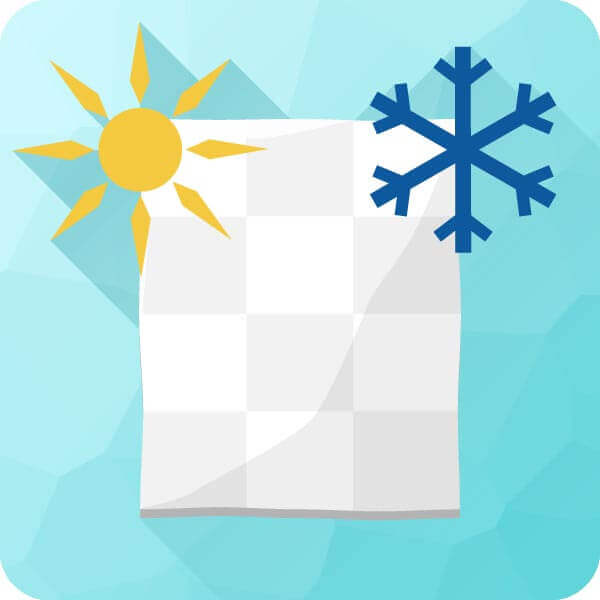
The all-season blanket or four-season blanket consists of a thin and a thick blanket that are knotted together. They can be used in combination or separately, so that the right blanket is available for every season. In summer, only the thin blanket is needed, in spring and autumn the thick one, and in winter both. Since there are two blankets, an all-season blanket is usually a little more expensive than a summer or winter blanket.
Filling materials for duvets
One of the most important prerequisites for a restful and peaceful sleep is the climate in the bed. It should not only be warm enough, but also dry, because every person sweats out about one litre of fluid at night. The filling material of the duvet is decisive for the sleeping climate. Nevertheless, many people do not know what is actually contained in their duvet. The most common filling materials are down, natural and synthetic fibres.
Down: The cosy-soft classic
Down is the classic among blanket fillings. Many people appreciate the feeling of sleeping in these soft, voluminous blankets. These small and very soft feathers are the under feathers of geese or ducks. Air cushions form in the down of the birds, which protect against heat and cold by insulating against heat. For this reason, they are ideal for duvets. They keep the sleeper warm better than synthetic fibres, for example, and stay dry longer because they are better at wicking away moisture. Down from geese or ducks absorbs fifteen times as much moisture as polyester. To prevent moisture from accumulating in the down duvet, it should be well aired and shaken out after sleep.
When caring for down duvets, it is important to pay attention to the properties of the material. If treated incorrectly, the down may lose its insulating properties. However, a down duvet only needs to be cleaned about every three years. It is best to take your duvet to a professional cleaner.
Down and animal welfare
Down usually comes from ducks and geese. Although the plucking of live animals is banned in the EU, the production can still be associated with great animal suffering. When buying, look for certificates such as the Global Traceable Down Standard, the Responsible Down Standard and the Down Codex. Down labelled with these comes from animals that have been kept as ethically as possible.
Synthetic fibres: Ideal for allergy sufferers
Blankets filled with synthetic fibres are inexpensive and therefore real bestsellers. Even though they are not as fluffy as down duvets, they have a decisive advantage over them: they can be easily cleaned at home at high temperatures. This is especially important for allergy sufferers.
Synthetic fibre blankets made of polyester are particularly widespread. Polyester is basically the same material that PET bottles are made of. It is made from fossil materials such as coal or petroleum. In duvets, polyester is in the form of hollow fibres that are pleasantly soft and insulate well. Polyester duvets are available in all warmth classes.
An alternative to polyester that has very similar properties is lyocell, which is also sold under the brand name Tencel. The industrially manufactured synthetic fibres are made from the renewable raw material wood and are therefore biodegradable. Duvets made of wood fibres are breathable and just as allergy-friendly as versions made of polyester. Lyocell wraps itself smoothly around the body and feels very soft.
Natural fibres: Against night sweats
Cotton blankets are kind to the skin, easy to care for and hard-wearing. Their moisture-regulating properties make them popular summer blankets. Even higher washing temperatures are no problem for cotton blankets, which is why they are well suited for allergy sufferers. However, the cultivation and harvesting of cotton often causes environmental damage. Quality seals that identify sustainably grown cotton include the Global Organic Textile Standard and IVN Naturtextil.
Silk duvets also look particularly good during the summer months. Silk is light, supple and absorbs a lot of moisture without feeling wet. Blankets made of silk are therefore ideal for sleepers who get warm quickly at night.
Wool duvets are naturally fluffy and allow air to circulate optimally, which contributes to a dry sleeping climate. Since wool is heavier than down, the material is optimal for those who like to feel the weight of their blanket. Those who sweat a lot at night should find out about camel hair fillings. The exotic material is particularly moisture-regulating, but also expensive and heavy.
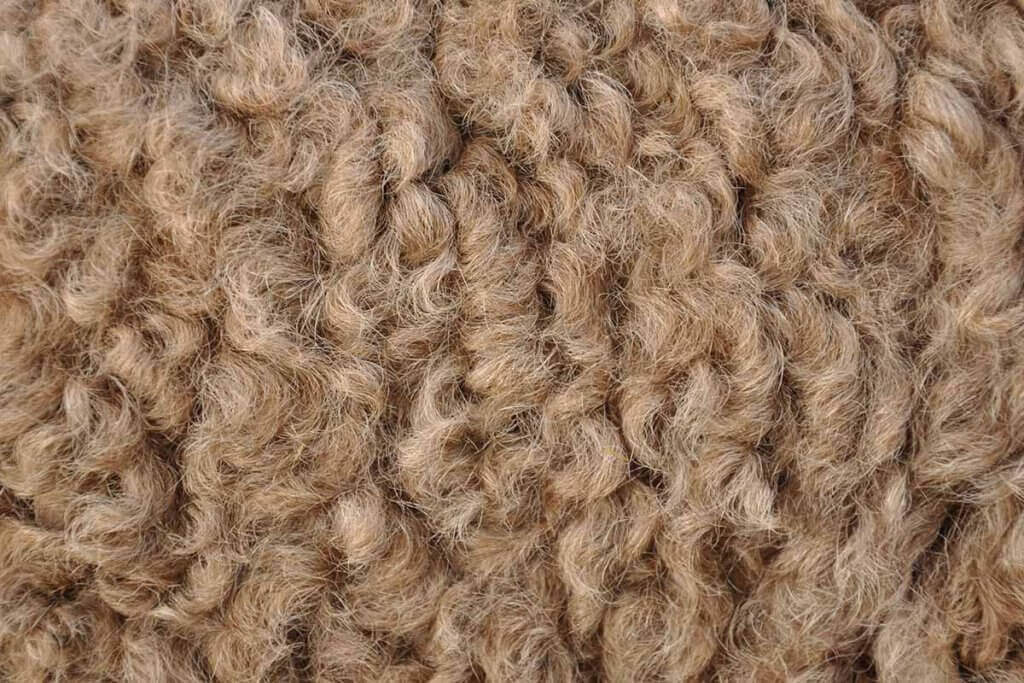
Other important buying criteria
Your new duvet must fit you, and this also applies to the size. After all, no one wants to get cold feet. The quilting seam, which otherwise disappears under the duvet cover, affects the warmth properties of the duvet just as much as its weight.
Suitable dimensions for every body size
A normal duvet is 135 centimetres wide and 200 centimetres long. In addition, there are numerous other sizes that should ideally fit the size of the bed. For couples who share a duvet, there are extra-wide versions. Particularly tall people need an extra-long duvet. A duvet should be at least 20 centimetres longer than you are tall.
In Germany, there are standardised blanket formats:
| Size in centimetres | Designation |
| 100 x 135 | toddler size |
| 135 x 200 | standard size |
| 135 x 220 | extra length |
| 155 x 200 | extra width |
| 155 x 220 | Comfort size |
| 200 x 200 | Double bed size Standard |
| 200 x 220 | double bed size extra length |
| 240 x 220 | Comfort double bed size |
| 260 x 220 | King Size |
The quilting seam: everything in place
Quilting seams divide the quilt into smaller sections. The upper and lower parts of the cover are joined or “stitched” with a bar. This prevents the filling material from slipping and keeps the quilt evenly warm. The web bands have different heights. With a web height of two centimetres, the blanket is correspondingly thin and suitable for summer temperatures. A warm winter blanket, on the other hand, tends to have a web height of 10 centimetres.
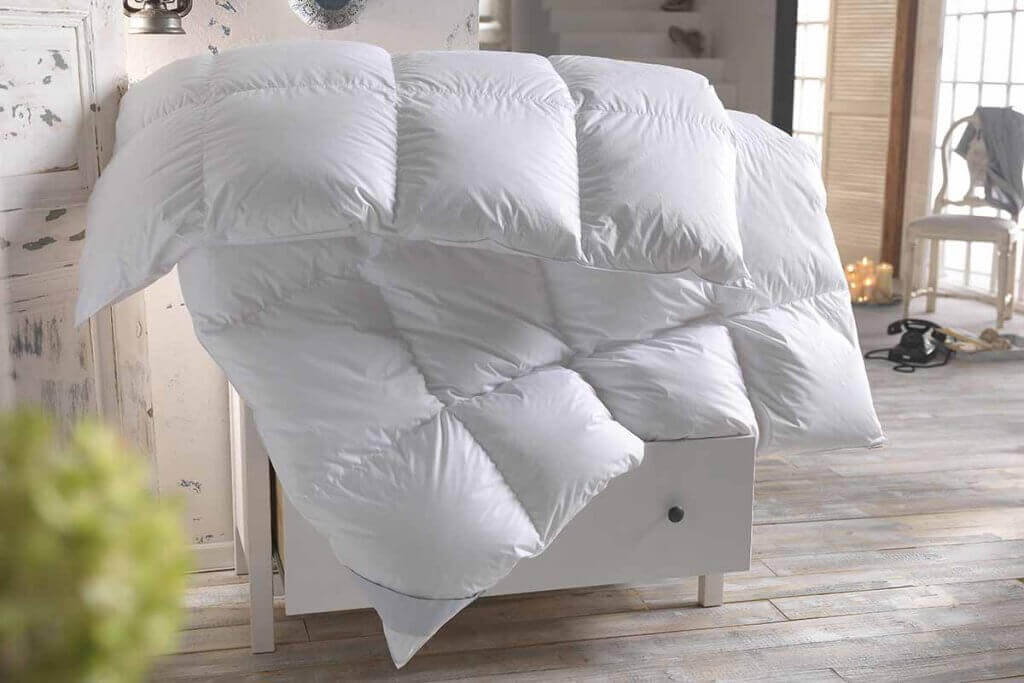
The divisions into 3 x 4 or 4 x 6 closed chambers or “cassettes” are common. Slipping of the filling material is almost impossible with cassette quilts, which is why they have good thermal properties. The smaller these cassettes are, the less filling material is needed. A quilt with many cassettes is accordingly thin and makes a good summer quilt.
Lightweight or heavyweight?
The filling weight tells you how heavy a quilt is. Extra-light quilts weigh half a kilogram, while heavy quilts weigh around two kilograms. Thin, light blankets allow air to circulate on summer nights, while thick, heavy blankets keep you nice and warm in winter. Ultimately, however, the weight depends above all on your personal preferences. Some people hardly notice the blanket and prefer a light version even in winter. Other people find it particularly pleasant to feel the weight of the blanket. Special weighted blankets with sewn-in beads weigh several kilograms. They are often used to treat sleep problems.
Care instructions for duvets
Unless you suffer from allergies, you do not need to wash your duvet too often. It is sufficient to clean a washable duvet in the washing machine once or twice a year. With most natural fibre duvets, it is quite sufficient to air and shake them out regularly.
How do you care for down and animal hair blankets?
If you know what to look for, caring for a down duvet almost takes care of itself. Due to the natural properties of the small feathers, it is sufficient to air and shake out the duvet regularly. This allows any moisture that the duvet may have absorbed to escape.
To air the duvet, simply place it on a clothes horse or over a line. You can also hang the down duvet out of the window, but it must not be exposed to rain or strong sunshine. Do not use carpet beaters or hoovers. They can cause down to escape from the duvet. If you want to wash the duvet, it is best to take it to a professional dry cleaner. A down duvet only needs to be washed about every three years.

Even with blankets filled with animal hair, it is usually sufficient to air them. Due to its natural properties, animal wool does not need to be washed. Sheep’s wool, for example, contains the substance lanolin, which has an antibacterial and odour-neutralising effect. A wash cycle would remove this valuable substance, losing all the benefits of the material. If you really need to wash a woollen blanket, you should use the wool wash cycle and follow the manufacturer’s washing instructions.
How do I clean a duvet in the washing machine?
Duvets with synthetic fibre filling are usually machine washable. Nevertheless, always follow the manufacturer’s instructions before washing. A duvet should not be put in the washing machine with other textiles, but only individually, because it takes up a lot of space during the wash cycle.
If the duvet is not very dirty, it is sufficient to wash it once or twice a year. Basically, with every duvet it is important to air it well after sleeping so that the absorbed moisture can escape. Otherwise, the duvet provides an excellent breeding ground for dust mites and other uninvited guests. Use a mild detergent without brighteners. Do not use fabric softener, as this can have negative effects on the filling material.
Wash the blanket at a temperature of at least 60 degrees Celsius. At this temperature, mites die or become infertile. Synthetic fibre and cotton blankets can usually be washed at 60 degrees. The situation is different for blankets with wool, camel hair, cashmere or silk fillings. They can only tolerate a temperature of 30 degrees Celsius.
If your washing machine does not have a special programme for duvets, select the delicate or wool wash programme. When spinning, you should enter a low speed, for example 400 revolutions per minute.

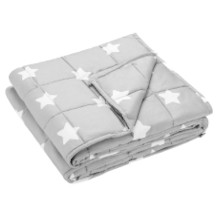
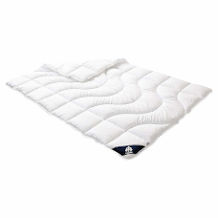
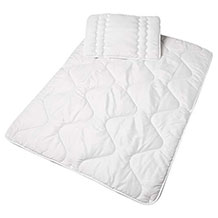
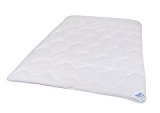
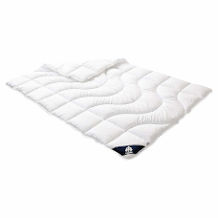
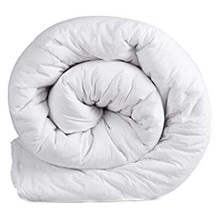
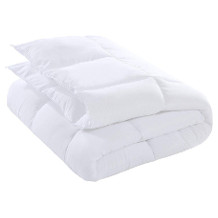
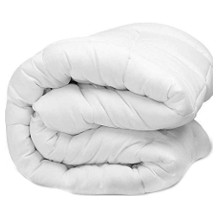

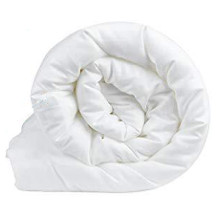
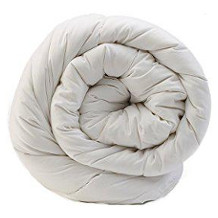
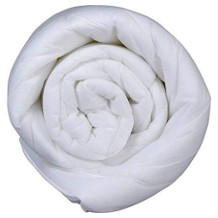

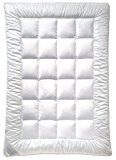
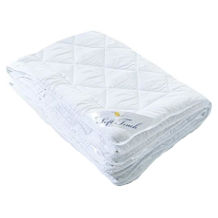


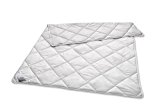
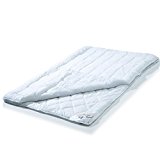
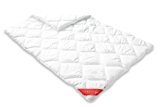
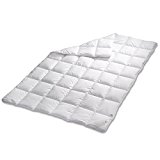


 6,019 reviews
6,019 reviews
